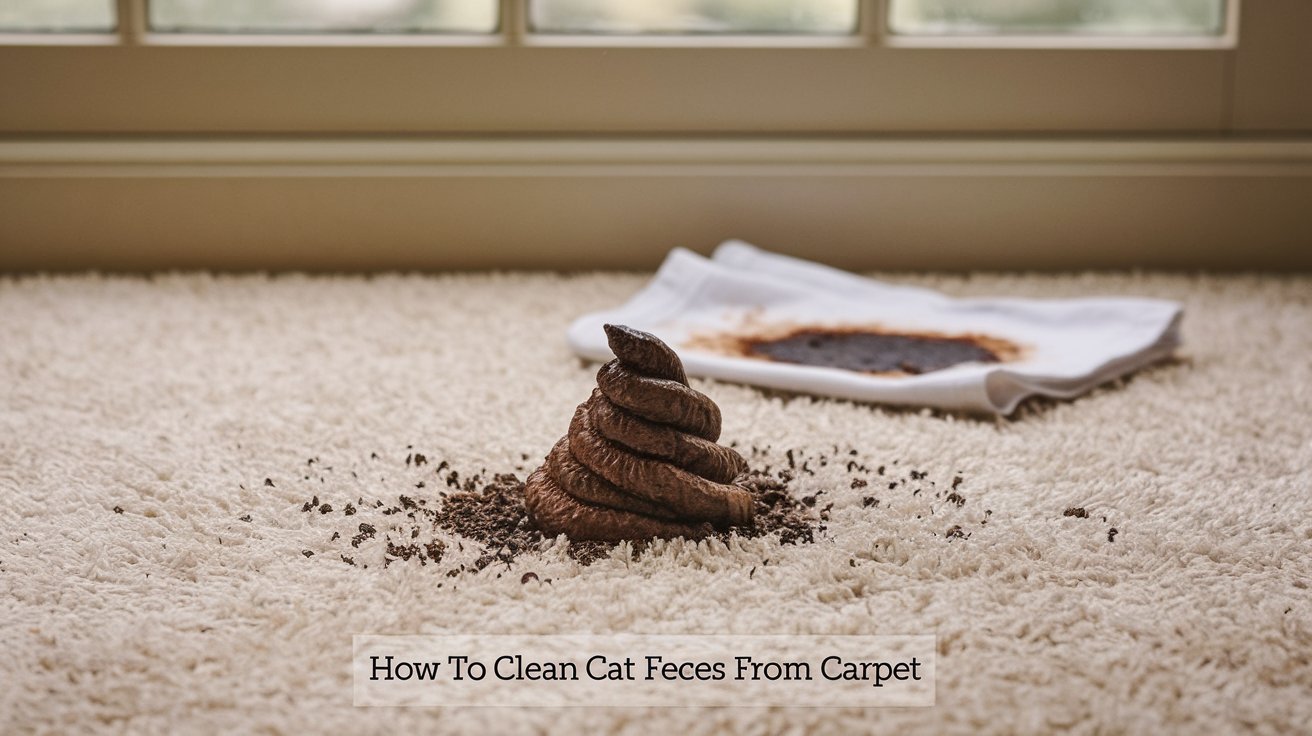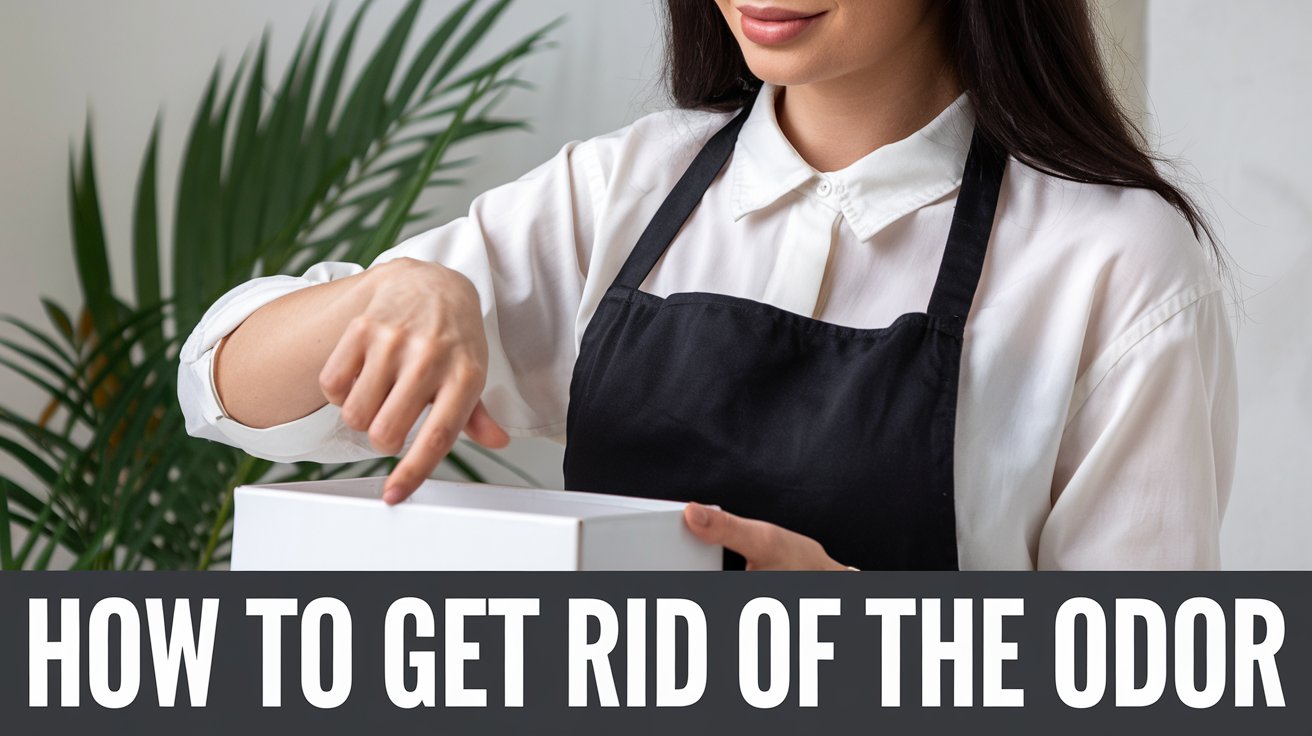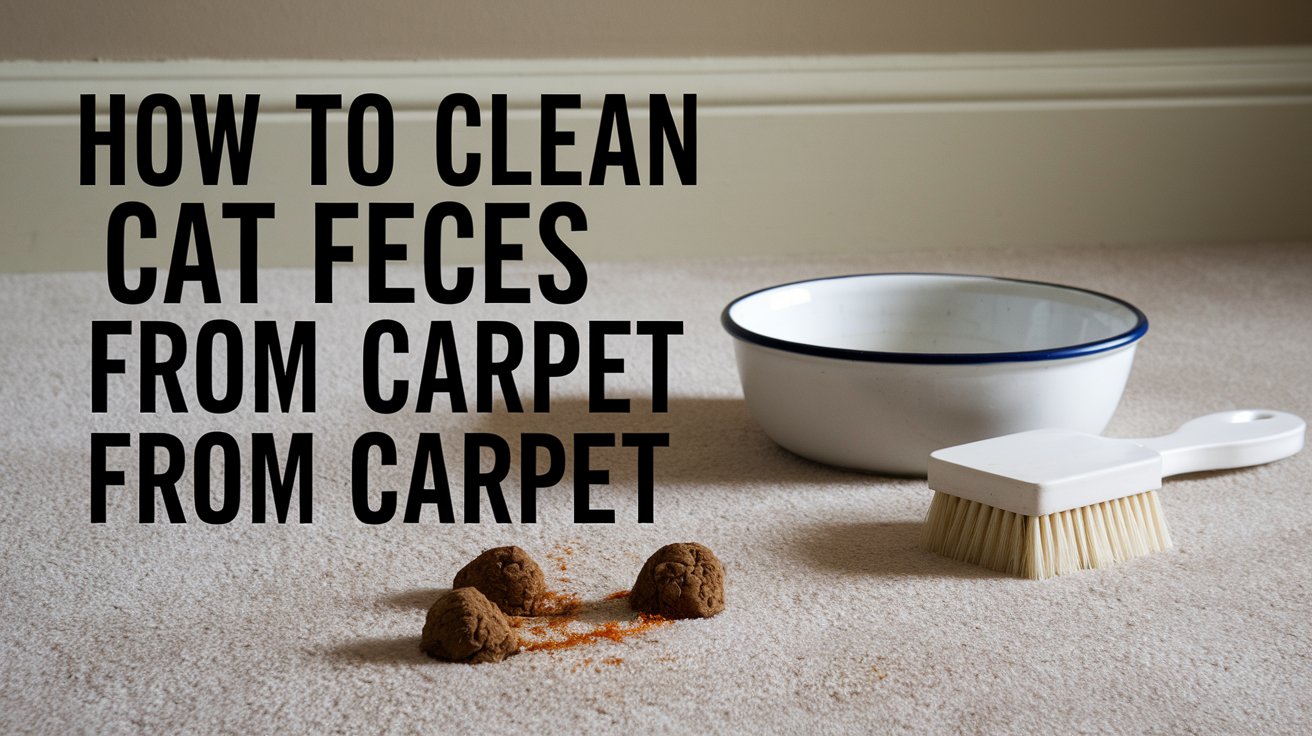
How to Clean Cat Feces from Carpet: A Step-by-Step Guide
We love our cats, but accidents happen, and sometimes those accidents land right on the carpet. When your feline friend leaves a mess, cleaning it up quickly and properly is essential to prevent stains and odors from lingering. Carpet can easily absorb unpleasant smells, and cat feces can be tricky to remove if not handled correctly. This guide will help you clean cat feces from your carpet effectively, so your home stays fresh and clean.
How to Clean Cat Feces from Carpet: A Step-by-Step Guide
Gather Your Cleaning Supplies
Before diving into cleaning, ensure you have all the necessary tools. Being prepared will help you tackle the mess efficiently and minimize any potential damage to your carpet.
- Gloves (to protect your hands)
- Paper towels or disposable clothes
- Enzyme cleaner (specifically for pet stains)
- Soft brush or sponge
- Water in a spray bottle
For extra cleanliness, you may also want baking soda, vinegar, old towels or rags, and a fan or hairdryer for faster drying.
Remove the Solid Waste
First, use gloves to remove any solid feces. Be careful not to push the waste further into the carpet fibers. Gently scoop it up with a paper towel or disposable cloth and dispose of it.
Be sure not to press the feces into the carpet or smear it across the surface. This can make it harder to clean and cause deeper stains.
Blot the Area
Once the solid waste is gone, blot the affected area to absorb any moisture. Use a paper towel or cloth to press into the carpet gently.
Avoid rubbing or scrubbing the stain, as rubbing can cause the stain to spread and push it deeper into the carpet fibers. Blotting helps prevent damage or discoloration.
Apply an Enzyme Cleaner
Enzyme cleaners are designed to break down organic matter, such as pet feces, making them the ideal choice for this mess. Spray the enzyme cleaner generously on the stained area.
These cleaners neutralize both the stain and the odor, ensuring that the smell doesn’t linger and that your cat isn’t tempted to use the same spot again.
Gently Scrub the Carpet
Using a soft brush or sponge, lightly scrub the carpet to lift the stain. Be careful not to scrub too hard, as this could damage the fibers.
Always use a soft brush and avoid excessive force. A gentle circular motion is often enough to lift the stain without harming your carpet.
Rinse with Water
After scrubbing, spray the area with clean water to rinse out the enzyme cleaner. Blot the water up with a clean towel until the carpet feels slightly damp.
Make sure to thoroughly rinse the area, as any leftover cleaner can leave a sticky residue that attracts dirt over time.
Dry the Carpet Properly
Allow the carpet to air dry, or use fans or a hairdryer to speed up the process. Ensuring the carpet is completely dry helps prevent mold and mildew.
Using a fan or laying down towels can help absorb any excess moisture. If the carpet stays damp for too long, it could develop an unpleasant smell.

How to Get Rid of the Odor
Even after the stain is gone, you might notice a lingering odor. Here’s how to handle that.
Baking Soda for Odor Removal
Sprinkle a generous amount of baking soda over the cleaned area and let it sit for at least 30 minutes to absorb any remaining odor.
After letting the baking soda sit, vacuum it up thoroughly. This helps refresh the carpet and neutralize any bad smells.
Vinegar as a Natural Odor Neutralizer
Vinegar is an excellent natural solution for pet odors. Mix equal parts vinegar and water, spray it on the carpet, and let it sit for a few minutes.
Vinegar neutralizes ammonia found in pet waste, effectively eliminating lingering smells. Just be sure to test it on a small area first to ensure it won’t discolor your carpet.
Commercial Odor Removal Products
If natural remedies don’t work, you can use a commercial odor removal spray designed for pet stains.
If the smell persists despite your best efforts, a commercial cleaner might be the best solution. Follow the manufacturer’s instructions for safe use.
Dealing with Stubborn Stains
Some stains are more persistent and require a little extra effort.
Hydrogen Peroxide for Tough Stains
For particularly stubborn spots, you can apply a small amount of hydrogen peroxide to break down the stain.
Hydrogen peroxide can bleach certain carpets, so test it in an inconspicuous area before applying it to the stain. If it’s safe, blot it gently into the stain and let it sit for a few minutes before rinsing.
Professional Carpet Cleaning Services
If all else fails, you may need to call in the experts. Professional cleaners have the tools and expertise to remove even the toughest pet stains.
If the stain persists after trying multiple cleaning methods, or if you’re dealing with an older, set-in stain, professional help may be necessary.

How to Prevent Future Accidents
The best way to deal with cat feces on your carpet is to prevent accidents in the first place.
Understanding Why Cats Have Accidents
Cats are typically clean animals, so repeated accidents may be a sign of a problem.
Sometimes, underlying health conditions like digestive issues or urinary tract infections can cause your cat to have accidents outside the litter box. Consult your vet if this happens frequently.
Litter Box Placement
Make sure your cat’s litter box is in a convenient and quiet location. Cats often avoid their litter box if it’s in a high-traffic or noisy area.
Keeping the litter box in a comfortable spot makes your cat more likely to use it consistently.
Keeping Your Carpet Clean Over Time
Regular maintenance can help keep your carpet in good condition and prevent stains from setting in.
Quickly addressing any accidents, spills, or stains ensures your carpet stays clean and fresh.
Conclusion
Cleaning cat feces from your carpet can be a frustrating task, but by following the right steps and using the right tools, you can get your carpet looking and smelling fresh again. It’s always best to clean up accidents as soon as they happen to avoid stains and odors from setting in. If all else fails, don’t hesitate to reach out to a professional cleaner for help.
Frequently Asked Questions
How do you get cat poop out of the carpet?
Use gloves to remove the solid waste, blot the area with a clean cloth, apply an enzyme cleaner, gently scrub, and rinse with water. Let the area dry completely.
What should I use to clean up cat poop?
An enzyme cleaner is the best option, as it breaks down organic waste. You can also use baking soda, vinegar, and water for natural cleaning.
How to get dried poop off the carpet?
Soften the dried poop with water or a damp cloth, then carefully scrape it off. Apply an enzyme cleaner to remove any residue and odors.
How to get rid of the smell of cat poop?
Use an enzyme cleaner or a mix of vinegar and water. For extra odor control, sprinkle baking soda over the area, let it sit, then vacuum.
What is the best cleaner for dried poop?
An enzyme cleaner specifically designed for pet stains is the most effective option for removing dried poop and eliminating odors.

I am a dedicated writer and expert in cats, with years of experience studying feline behavior, health, and breeds. Passionate about sharing my knowledge, I provide valuable insights and practical advice to help cat lovers understand and care for their furry companions. When not writing, I enjoy spending time with my beloved cats, continually learning and deepening my expertise.

Leave a Reply